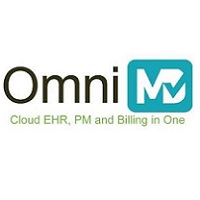 By OmniMD
By OmniMD
Twitter: @omnimd
The Department of Health and Human Services (HHS) has set forth goals that are challenging and ambitious. Reduce costs while improving quality of care by transitioning to evidence-based medicine that rewards all stakeholders across the value chain – such as government agencies, providers and insurance payers.
What’s required are new guidelines — specificity that defines a mutually agreed upon set of regulations and standards to govern fair practice among all stakeholders in public and private institutions. Once published, these guidelines can be coded into Revenue Cycle Management (RCM) software that will simplify the billing and payments process.
Today, the fee-for-service model is evolving towards prospective payment and value-based care. With this change, Revenue Cycle Management is not just limited to do billing, but it also helps the provider by eliminating concerns about eligibility verification, as well as, providing a powerful internal scrubber to prevent rejections and online payment processing to collect the payment at the front end itself.
Tomorrow, when new guidelines are published, Revenue Cycle Management can easily adapt, reducing friction across the entire value chain. Physicians will have more time to focus on the value, outcome and quality of care while moving towards an evidenced-based healthcare model.
Traditional Revenue Cycle Management, which was just playing a role as ‘Back-End’ pillar, is now coming out of that comfort zone and will have to act now as an ‘End-to-End’ pillar that begins at patient intake or even before.
With accurate and well designed work flow, providers will be able to achieve better cash flows by collecting patient payments up front, determining precise eligibilities and filing clean claims to payers. Revenue Cycle Management Systems will need to offer financial transparency, ensure timely and accurate claims and improve patient satisfaction level with the billing experience.
Stuart Hanson, Chair and Senior Vice President of the HIMSS Revenue Cycle Improvement Task Force have said, ‘A successful Revenue Cycle is a Patient-Centric’. He also stated that “Providers and plans have recognized the need to collaborate to provide a more consumer-friendly revenue cycle experience”.
Patient Intake
Patient Intake will play a key role with revenue cycle process. Patient deductibles, co-payments and eligibility verification are key factors to uplift the cash flow as well as ensuring clean claims.
All the rejections have to be studied and analyzed thoroughly and then, predictive analysis and machine learning will come into the picture. With the help of machine learning, Revenue Cycle Management will be smart enough to prevent the 80 to 90 percent of rejections which will lead to better cash flow.
Machine learning will ensure the providers do not miss any significant signs that will result in major rejections and reduced cashflow.
The Future of Value-Based Care
Last Year, Sylvia M. Burwell, Secretary of the Department of Health and Human Services (HHS) announced HHS’s goal to tie 30 percent of fee-for-service Medicare payments to value-based payment models.
Burwell’s future objective, which builds off of the basics of the Affordable Care Act (ACA), is to tie 85 percent of traditional Medicare payments to quality by 2016 and 90 percent by 2018.
“We believe these goals can drive transformative change, help us manage and track progress, and create accountability for measurable improvement,” Burwell said.
“Whether you are a patient, a provider, a business, a health plan, or a taxpayer, it is in our common interest to build a health care system that delivers better care, spends health care dollars more wisely and results in healthier people.”
The future of healthcare is assured when all stakeholders work together towards a common goal. Revenue Cycle Management can provide a smooth transition towards achieving success by automating the billing and payments process that aligns with new guidelines.
This article was originally published on OmniMD and is republished here with permission.
